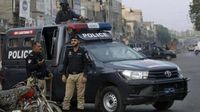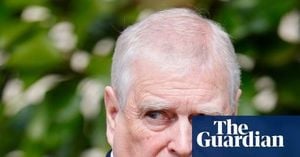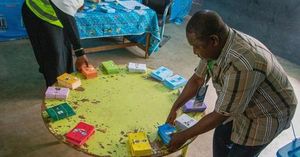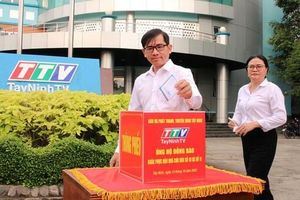Pakistan found itself gripped by escalating turmoil on October 13, 2025, as authorities intensified their crackdown on the far-right Islamist group Tehreek-e-Labbaik Pakistan (TLP). The events unfolded in the city of Muridke, near Lahore, where TLP supporters had set up camp, preparing for a march toward Islamabad to stage an anti-Israel protest in solidarity with Palestinians. The protest, which began as a demonstration, quickly spiraled into violent clashes, leaving the nation’s internal security situation hanging by a thread.
According to Dawn, the early hours of Monday saw a massive deployment of police forces and Pakistan Rangers to Muridke. Law enforcement agencies, anticipating a large-scale confrontation, dug trenches and blocked major routes leading to the capital. Their goal was clear: prevent TLP supporters from advancing toward Islamabad, a city already on edge due to the group’s reputation for disruptive and sometimes violent protests.
The crackdown reached its peak before Fajr (morning) prayers, when Punjab Police launched what was described by News18 as a “grand operation” to disperse the protesters. Eyewitnesses recounted scenes of chaos and fear as intense shelling and straight gunfire echoed through the streets. The area was soon engulfed in violence, with several vehicles and containers belonging to TLP set ablaze. Protesters, faced with overwhelming force, fled the scene, leaving behind a trail of destruction and a community in shock.
The human cost of the operation was significant. Local TLP leaders claimed that at least 13 people were killed and more than 150 injured in the clashes. Police, for their part, confirmed that around 60 of their personnel sustained injuries during the confrontations. The numbers, while disputed, painted a grim picture: what began as a political demonstration had rapidly devolved into one of the most violent episodes in recent memory.
In the days leading up to the crackdown, Pakistani authorities had already begun tightening their grip. According to ANI, at least 170 people — including party workers, office-bearers, and activists — were detained across Punjab under Section 3 of the Maintenance of Public Order (MPO). Overnight operations targeted homes and local offices, with detainees subsequently transferred to central prisons in Pakpattan, Sahiwal, and Okara. The police force was put on high alert across five districts, with senior officers leading operations and reinforcements dispatched to Muridke.
Amid the unrest, TLP chief Saad Rizvi’s voice emerged as a rallying point for his supporters. In a statement quoted by Dawn, Rizvi condemned the police action, accusing authorities of using “lethal weapons” against his followers and orchestrating large-scale arrests. “We are ready for talks,” he declared, while simultaneously urging his supporters to “remain calm and await his next orders.” Rizvi also emphasized that the rally’s purpose was to express solidarity with Palestine, reiterating, “Pakistan should not recognise Israel.” Despite the mounting chaos, he claimed he had not authorized the march to proceed to Islamabad, suggesting a disconnect between the leadership and the rank-and-file protesters on the ground.
However, as the operation unfolded, Rizvi’s whereabouts became a mystery. News18 reported that several senior TLP leaders had been detained, and with Rizvi missing, the group’s chain of command appeared fractured. Authorities, seeking to restrict communication among protesters, imposed a complete shutdown of mobile and internet services in Muridke and surrounding areas. This digital blackout heightened confusion and made it difficult for families and journalists alike to ascertain the fate of those caught up in the violence.
The government’s approach to the crisis was multifaceted. On one hand, Interior Minister Mohsin Naqvi and Punjab’s Inspector General of Police offered dialogue to TLP leaders, hoping to defuse the situation through negotiation. Yet, the group refused to halt its planned march, demanding the release of detained members and the withdrawal of blasphemy-related cases. The standoff highlighted the deep mistrust between the state and TLP, a group known for its hardline religious stance and history of confrontational protests.
Prime Minister Shehbaz Sharif, recognizing the gravity of the situation, convened a high-level meeting with Interior Minister Naqvi to review internal security and law and order. According to ANI, the Prime Minister’s Office confirmed that Naqvi briefed Sharif on ongoing counterterrorism efforts and the steps being taken to stabilize the country. The urgency of the meeting reflected not only the immediate threat posed by the unrest but also the broader challenges facing Pakistan’s fragile political landscape.
The roots of the current crisis run deep. The TLP was banned in April 2021 after its members clashed with police over the arrest of Saad Rizvi under anti-terror laws. The ban, however, was later lifted, allowing the group to reemerge as a potent force in Pakistani politics. Its ability to mobilize large numbers of supporters — particularly on issues related to blasphemy and foreign policy — has made it both a formidable player and a persistent headache for successive governments.
The events in Muridke also unfolded against the backdrop of international developments. As TLP supporters rallied in solidarity with Palestinians, Israel and Hamas were preparing for a significant prisoner exchange, with the release of hostages expected to begin early Monday morning. The symbolism was not lost on observers: in one part of the world, a step toward reconciliation; in another, deadly confrontation over the same cause.
For ordinary Pakistanis, the violence brought back memories of previous TLP protests that had paralyzed major cities and tested the state’s capacity to maintain order. The looting of police facilities in Lahore’s Shahdara area, where TLP supporters allegedly seized 18 official motorbikes and government vehicles at gunpoint, underscored the volatility of the situation. Some policemen were even reported missing, fueling fears of abduction and further escalating tensions.
As the dust settled over Muridke, questions lingered. Would the government’s show of force deter future protests, or would it deepen resentment and fuel further unrest? Could dialogue offer a way out of the impasse, or was confrontation now inevitable? With TLP’s leadership in disarray and the government facing mounting criticism for its heavy-handed tactics, Pakistan’s path forward looked anything but certain.
In a country where political and religious passions often intersect with explosive results, the events of October 13, 2025, served as a stark reminder of the challenges facing Pakistan’s democracy and the delicate balance between order and dissent. As families mourned the dead and the injured sought treatment, the nation braced itself for what might come next, hoping — perhaps against hope — for a return to calm.




